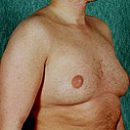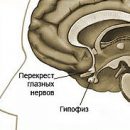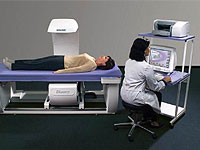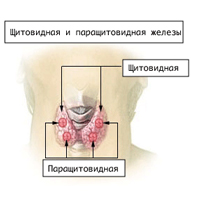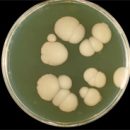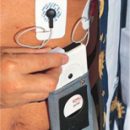Autimmune thyroidita Hashimoto most often occurs in women aged 40 to 50 years and is one of the most frequent causes of primary hypothyroidism. The main cause of the disease is congenital violations in the immunological control system. With hypothyroid state, thyroxine replacement therapy is shown.
Content
Autimmune thyroiditis Hashimoto most often occurs at the age of 40 - 50 years and is one of the most frequent causes of primary hypothyroidism.
Causes of disease development
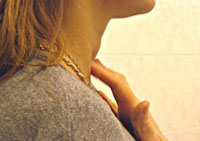 It is believed that the main cause of the disease is congenital disorders in the immune system. Often both diseases are combined with non-endocrine autoimmune diseases (vitiligo, miastic, rheumatoid arthritis, nonspecific ulcerative colitis, etc.)
It is believed that the main cause of the disease is congenital disorders in the immune system. Often both diseases are combined with non-endocrine autoimmune diseases (vitiligo, miastic, rheumatoid arthritis, nonspecific ulcerative colitis, etc.)
As a result of autoimmune damage to the thyroid gland, antibodies are formed to various components of the thyroid gland (thyroglobulin, microsomal fraction) to form a complex of antigen antibody, the development of changes in the thyroid gland.
The risk factors of autoimmune thyroiditis include:
- Transferred diffuse toxic goiter in history
- The transferred operation on the thyroid gland
- The presence of autoimmune diseases
- The presence of close relatives, patients with autoimmune thyroiditis
Classification of the disease
Autimmune thyroidita Hashimoto can have the following clinical options:
- Hypertrophic (hyperplastic) form - goiter is formed
- Atrophic form
- The focal form is the defeat of one lobe of the thyroid gland
Laboratory diagnostics
An autoimmune thyroiditis hashimoto develops gradually, in the initial stages is accompanied by only general weakness and fatigue. In general blood test, the increase in leukocytes is noted, the EE is on average reaches 30 mm / h, sometimes 50-60 mm / h.
The results of hormonal tests can be different - from eutireozo to explicit hypothyroidism, accompanied by anemia and elevated blood cholesterol.
Normally, the titer of anti-ramoglobulin and antimicrosal antibodies does not exceed 1: 100. Titres exceeding 1: 400 indicate the hashimoto thyroidite (detected in 95% of cases). Anti-ramp antibodies to thyroglobulin can be detected in some other autoimmune diseases (system red lupus, rheumatoid arthritis, autoimmune hemolytic anemia).
Ultrasound - the heterogeneity of the structure of the thyroid gland, sometimes calcifications in the tissues of the gland. Often, with autoimmune thyroid, the hashimoto there are nodes of the thyroid gland, which are rarely discharged.
Principles of treatment of autoimmune thyroiditis
With autoimmune thyroid, eutheroid - treatment is not shown. With an increase in thyroid volumes, L-thyroxine is possible for obstructing immune processes and reduce goiter sizes.
With autoimmune thyroid and hypothyroidism - the replacement therapy L-thyroxine is required.

